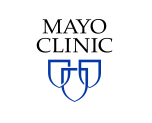Diaphragm Pacing System (DPS) In Participants With Amyotrophic Lateral Sclerosis (ALS)
| Status: | Active, not recruiting |
|---|---|
| Conditions: | Neurology, Neurology, Neurology, ALS |
| Therapuetic Areas: | Neurology, Other |
| Healthy: | No |
| Age Range: | 21 - Any |
| Updated: | 12/24/2016 |
| Start Date: | August 2013 |
| End Date: | April 2017 |
Multi-Center, Randomized Controlled Study of the NeuRx® Diaphragm Pacing System™ (DPS)In Participants With Amyotrophic Lateral Sclerosis (ALS)
The study is being conducted to determine if DPS treatment for people with ALS and
hypoventilation is associated with improved survival or diaphragm function.
The primary objective of the study is to conduct a multi-center, randomized controlled
clinical trial comparing standard of care (control) to diaphragm stimulator treatment with
the NeuRx® Diaphragm Pacing System™ (DPS) with respect to survival.
The secondary objective of the study is to conduct a multi-center, randomized controlled
clinical trial to compare standard of care treatment (control) to DPS in ALS subjects with
hypoventilation.
hypoventilation is associated with improved survival or diaphragm function.
The primary objective of the study is to conduct a multi-center, randomized controlled
clinical trial comparing standard of care (control) to diaphragm stimulator treatment with
the NeuRx® Diaphragm Pacing System™ (DPS) with respect to survival.
The secondary objective of the study is to conduct a multi-center, randomized controlled
clinical trial to compare standard of care treatment (control) to DPS in ALS subjects with
hypoventilation.
The study is a randomized controlled study to compare standard of care (control) to DPS
(diaphragm stimulator named The NeuRx® Diaphragm Pacing System™). Although it remains
uncertain if DPS is efficacious for the ALS subject, given the preliminary studies performed
by the device manufacturer, it has received FDA humanitarian device exemption (HDE) approval
as a humanitarian use device (HUD). This study will utilize a 2:1 randomization schedule
such that eligible ALS subjects will have a 2/3 chance of receiving DPS and 1/3 chance of
standard of care (control) treatment.
The NeuRx® Diaphragm Pacing System™ (DPS) is a four channel, implanted percutaneous
diaphragm muscle stimulation system. Under general anesthesia, the intramuscular electrodes
are laparoscopically implanted in the diaphragm. The ends of the implanted electrodes are
tunneled subcutaneously to an exit site on the chest or abdominal wall and connected to an
external stimulator.
(diaphragm stimulator named The NeuRx® Diaphragm Pacing System™). Although it remains
uncertain if DPS is efficacious for the ALS subject, given the preliminary studies performed
by the device manufacturer, it has received FDA humanitarian device exemption (HDE) approval
as a humanitarian use device (HUD). This study will utilize a 2:1 randomization schedule
such that eligible ALS subjects will have a 2/3 chance of receiving DPS and 1/3 chance of
standard of care (control) treatment.
The NeuRx® Diaphragm Pacing System™ (DPS) is a four channel, implanted percutaneous
diaphragm muscle stimulation system. Under general anesthesia, the intramuscular electrodes
are laparoscopically implanted in the diaphragm. The ends of the implanted electrodes are
tunneled subcutaneously to an exit site on the chest or abdominal wall and connected to an
external stimulator.
Inclusion Criteria:
1. Age 21 years or older.
2. Sporadic or familial ALS diagnosed as definite, probable or possible ALS as defined
by revised El Escorial criteria.
3. Evidence of hypoventilation at Screening with at least one of the following:
1. Maximal static inspiratory pressure (MIP) <60 cm H20.
2. Upright or supine forced vital capacity (FVC) <50% predicted for gender, age,
and height.
4. A phrenic nerve potential should be recordable bilaterally.
5. Subjects must not have taken riluzole for at least 30 days, or be on a stable dose of
riluzole for at least 30 days, prior to randomization (riluzole-naïve subjects are
permitted in the study).
6. Capable of providing informed consent and following trial procedures.
7. Geographically accessible to the site.
8. Negative urine pregnancy test at Screening in women of child bearing potential
(WOCBP). (Women who are post-menopausal or who have had a hysterectomy are deemed not
of child bearing potential).
9. Women of child bearing potential must use an adequate form of contraception:
abstinence, hormonal contraception (oral contraception, implanted contraception,
injected contraception or other hormonal (patch or contraceptive ring, for example)
contraception), intrauterine device (IUD) in place for ≥ 3 months, barrier method in
conjunction with spermicide, or another adequate method.
Exclusion Criteria:
1. Upright forced vital capacity (FVC) ≤ 45% of predicted for gender, age, and height.
2. Any prior use of non-invasive ventilation (NIV) outside of sleep (nighttime or naps).
3. Any pulmonary or cardiac disorder or other medical disorder that would be a
contraindication for general anesthesia or DPS hardware implantation in the chest.
4. Implanted electrical device such as a pacemaker or cardiac defibrillator.
5. Known diaphragm abnormality such as hiatal hernia or para-esophageal hernia of
abdominal contents into the thoracic cavity.
6. Participation in another treatment research study for people with ALS.
7. Exposure to any other agent currently under investigation for the treatment of people
with ALS (off-label use or investigational) within 30 days of the Screening Visit.
8. Clinically significant history of unstable or severe cardiac, oncologic, hepatic,
psychiatric, renal disease, or other medically significant illness.
9. Pregnant women or women currently breastfeeding.
We found this trial at
25
sites
University of Iowa With just over 30,000 students, the University of Iowa is one of...
Click here to add this to my saved trials
Click here to add this to my saved trials
University of Vermont The University of Vermont combines faculty-student relationships most commonly found in a...
Click here to add this to my saved trials
Cleveland Clinic Cleveland Clinic is committed to principles as presented in the United Nations Global...
Click here to add this to my saved trials
Cedars Sinai Med Ctr Cedars-Sinai is known for providing the highest quality patient care. Our...
Click here to add this to my saved trials
Click here to add this to my saved trials
University of Pittsburgh The University of Pittsburgh is a state-related research university, founded as the...
Click here to add this to my saved trials
Click here to add this to my saved trials
Ohio State University The Ohio State University’s main Columbus campus is one of America’s largest...
Click here to add this to my saved trials
Click here to add this to my saved trials
Click here to add this to my saved trials
Click here to add this to my saved trials
Mayo Clinic Florida Thousands of people come to Mayo Clinic in Jacksonville, Fla., annually for...
Click here to add this to my saved trials
Click here to add this to my saved trials
Hospital for Special Surgery Founded in 1863, Hospital for Special Surgery is the nation
Click here to add this to my saved trials
Click here to add this to my saved trials
Click here to add this to my saved trials
Click here to add this to my saved trials
Click here to add this to my saved trials
Click here to add this to my saved trials
Virginia Mason Medical Center Established in 1920, Virginia Mason began as an 80-bed hospital with...
Click here to add this to my saved trials
Click here to add this to my saved trials
Stanford University Stanford University, located between San Francisco and San Jose in the heart of...
Click here to add this to my saved trials
Click here to add this to my saved trials
Click here to add this to my saved trials










